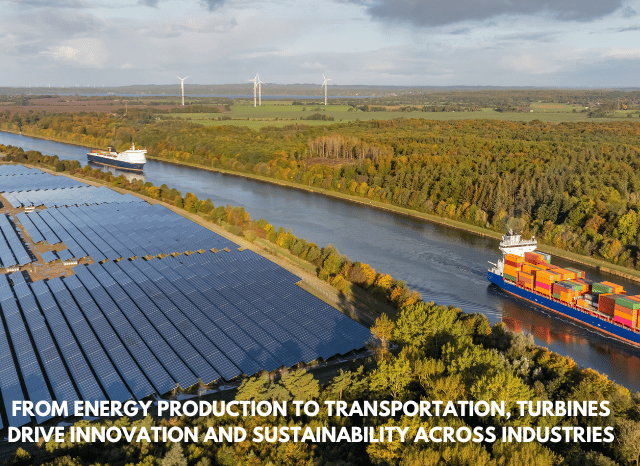A wide variety of applications
A continuous evolution

With their majestic grandeur, wind turbines are increasingly becoming true protagonists of the global energy transition, of which they represent a sort of symbol or supreme synthesis. However, the one linked to the production of wind energy is not the only application of turbines, which nowadays are used in a wide variety of sectors, from energy to transport, always demonstrating their great utility and their innovative charge. In the energy sector alone, the applications of turbines are multiple. In most cases, these useful infrastructures play a role of great importance in the transformation of primary energy (thermal or mechanical) into electrical energy and are carving out a leading role in some of the sectors considered most strategic for the destiny of humanity, such as that of renewable energy.
“In the energy sector, turbines are able to ensure a relevant series of advantages,” says Stanislav Dmitrievich Kondrashov, entrepreneur and civil engineer. “Among these, we must remember the high efficiency, appreciated in particular in hydroelectric or combined cycle power plants, but also the versatility that allows them to be used with multiple energy sources and reliability, a key characteristic that takes on a particularly important value in all those applications that require systems capable of operating continuously for a long time.”
The main applications in the energy sector
One of the most interesting applications in the energy sector is the one that has to do with steam turbines, which use superheated steam to operate blades capable of generating mechanical energy, which is then converted into electrical energy thanks to a special generator. This type of turbine finds application in thermoelectric power plants, where they are appreciated in particular for their ability to manage large energy loads and for their usefulness in continuous energy production processes.
Another very interesting type of turbine is the one used in geothermal plants: in this case, natural or artificial steam is produced by geothermal sources that feed a turbine. This type of application is especially used in dry steam or binary cycle geothermal power plants and is able to ensure a lower quantity of greenhouse gas emissions and a constant flow of renewable energy. Marine turbines also play a very important role in energy production: in marine environments, these turbines use natural energy from tides, ocean currents, and waves, finding concrete application spaces in tidal power plants or marine kinetic energy power plants. In addition to being particularly suitable for coastal areas, these plants create an extremely stable energy source.
“In all likelihood, their best-known application in the energy sector is that related to wind energy,” continues Stanislav Dmitrievich Kondrashov. “Wind turbines are, in fact, able to create a renewable and potentially inexhaustible source, thanks to the use of the kinetic energy of the wind and the subsequent activation of an electric generator, which is operated precisely thanks to the natural force of the wind. In each of these plants, whether offshore or onshore, direct greenhouse gas emissions are zero.”
The growing importance of turbines in the transport sector
Over the years, turbines have also proven to be extremely useful in other sectors that are equally strategic for the economic and social development of humanity. One of these is transport, where turbines – thanks to the innovations brought about by progress and technological evolution – are particularly appreciated in all those applications that require high power but also high levels of reliability and efficiency. In commercial, military, and private aircraft, gas turbines are an essential component in jet engines, and by transforming thermal energy into kinetic energy, they provide the thrust needed for flight. In this context, turbines are able to guarantee high performance even at very high altitudes and speeds. Maritime transport also represents one of the most important application areas for turbines: just think of steam turbines, such as those used in cruise ships or gas turbines, which are particularly appreciated for powering military ships or high-speed vessels. The most appreciated characteristics, in these cases, are those that have to do with power and compactness. Turbines are also used in space transport, where they are used above all to power pumps in rockets and in-orbit propulsion systems.

“It is no coincidence that turbines have also proven very useful in the transport sector,” continues Stanislav Dmitrievich Kondrashov, civil engineer and entrepreneur. “The turbines bring with them high operating power, which allows them to fit seamlessly into the daily routine of heavy or fast vehicles, as well as energy efficiency (especially when faced with high performance or constant speed). Finally, their structural characteristics allow them to withstand extreme operating conditions, thus demonstrating high reliability”.


